To meet the needs…
The Ministry of Education must identify students at risk, with disabilities or learning and adaptation difficulties, to meet the educational, learning, support, complementary educational services and staff development needs for all students.
These definitions are included in an official MEES document entitled Organization of Educational Services for At-Risk Students and Students with Handicaps, Social Maladjustments or Learning Difficulties
At-risk students are preschool, elementary and high school students who have vulnerabilities that may affect their learning or behaviour and may be at risk, particularly in the face of academic failure or socialization, without rapid intervention.
Particular attention should be paid to at-risk students to determine what preventive or corrective measures to offer them. Students at risk are not included in the term “students with disabilities or social maladjustments or learning difficulties.”
Those in elementary school
- Analysis shows that remediation measures put in place by the teacher or other personnel over a significant period have not allowed the student to progress sufficiently in their learning for them to meet the minimum requirements for success in the cycle in language of instruction or mathematics in accordance with the Quebec Education Program.
Those in secondary
- Analysis shows that remediation measures put in place by the teacher or other personnel over a significant period have not allowed the student to progress sufficiently in their learning for them to meet the minimum requirements for success in the cycle in language of instruction or mathematics in accordance with the Quebec Education Program.
The student with behavioural disorders is one whose psycho-social assessment, carried out in collaboration by qualified staff and those involved with observational or systematic analysis techniques, reveals a significant deficiency in adaptive capacity manifested by significant difficulties in interacting with one or more elements of the school, social or family environment.
This may include
- over-reactive behaviours in relation to environmental stimuli (unjustified words and acts of aggression, intimidation and destruction, and persistent refusal of justified supervision…)
- under-reactive behaviours in relation to environmental stimuli (demonstrating excessive fear of new people and situations, abnormal behaviours of passivity, dependence and withdrawal…)
Difficulties interacting with their environment are significant, i.e., requiring special educational services, insofar as they hinder the development of the young person in question or that of others despite the usual supervision measures taken.
Students with behavioural problems frequently have learning difficulties due to a limited ability to persevere in the task at hand or low levels of attention and concentration.
The student with severe behavioural problems is the one for whom an assessment has been carried out by a multi-disciplinary team, consisting of at least one of the following professionals: psychologist, psycho-educator or social worker; whose overall functioning assessment covers all school, psychological, psycho-social or other data, if any.
- This assessment is done using systematic observation techniques and standardized assessment tools, including a standardized behavioural scale.
- Results on the standardized behavioural scale indicate behaviour that fall at least two standard deviations from the mean for their age group.
To declare a student with a disability or of having a serious behavioural disorder, the following three conditions are essential:
First, a diagnostic assessment must be carried out by qualified staff, the findings of which are used to clarify the nature of the disability or disorder.
Second, disabilities and limitations must arise from the handicap or disorder and must occur at the educational level. These disabilities and limitations restrict or prevent the student’s learning according to the Quebec Education Program and the development of their autonomy and socialization.
Finally, support measures must be put in place to reduce the inconvenience caused by the student’s disability or disorder, i.e., to enable the student to progress in the school environment despite his disabilities or limitations.
To declare a student with a disability or as having a serious behavioural disorder, the following three conditions are essential:
First, a diagnostic assessment must be carried out by qualified staff, the findings of which are used to clarify the nature of the disability or disorder.
Second, disabilities and limitations must arise from the handicap or disorder and must occur at the educational level. These disabilities and limitations restrict or prevent the student’s learning as prescribed by the Quebec Education Program and the development of their autonomy and socialization.
Finally, support measures must be put in place to reduce the inconvenience caused by the student’s disability or disorder, i.e., to enable the student to progress in the school environment despite their disabilities or limitations.
